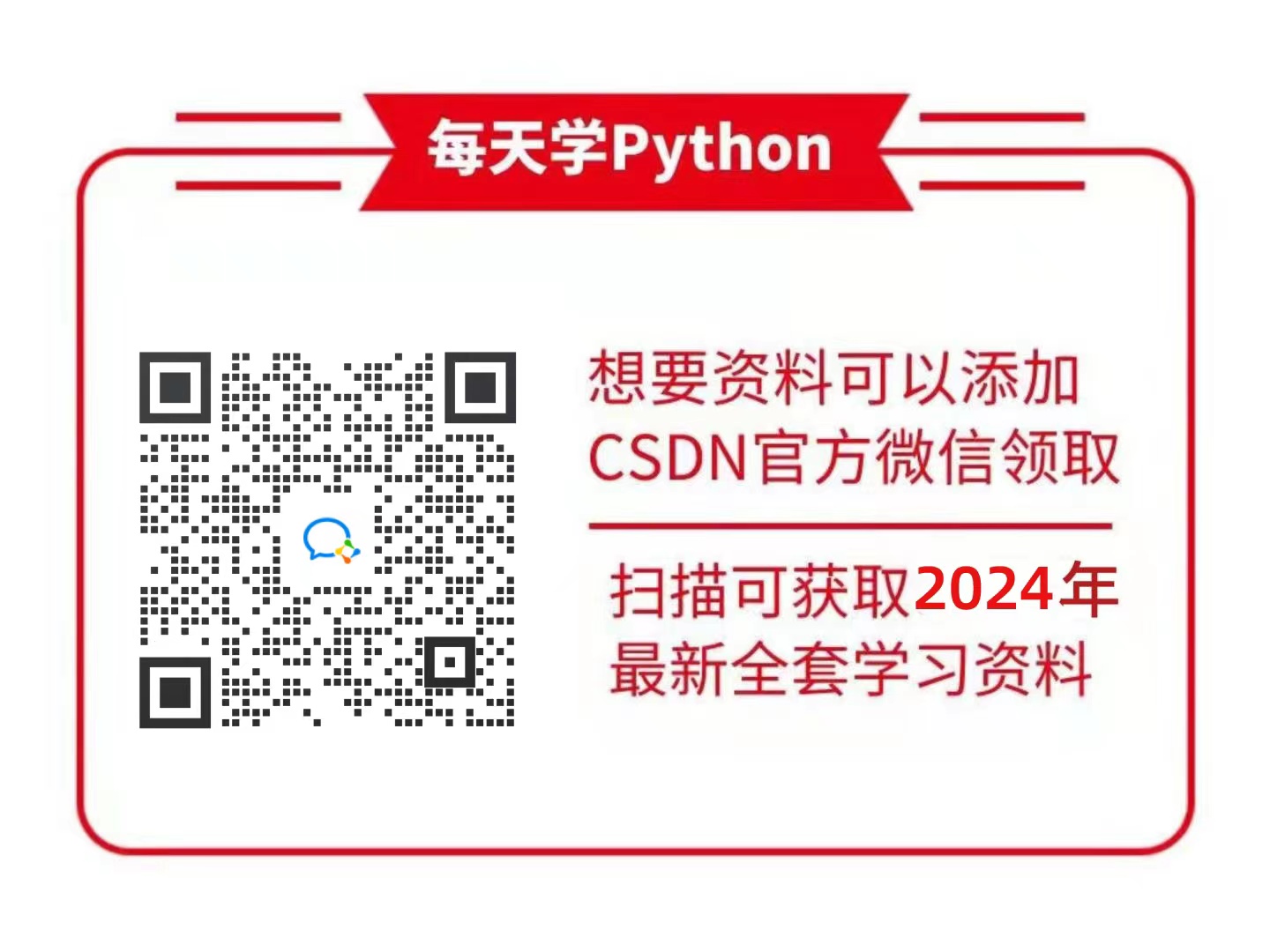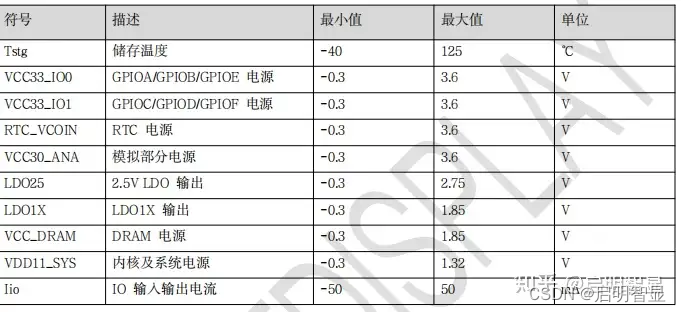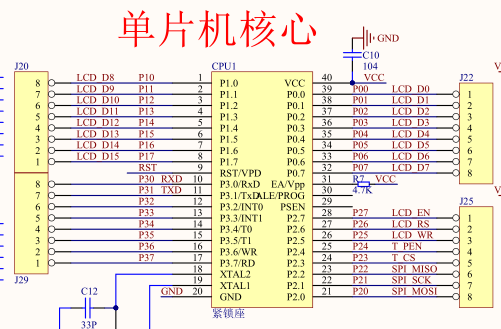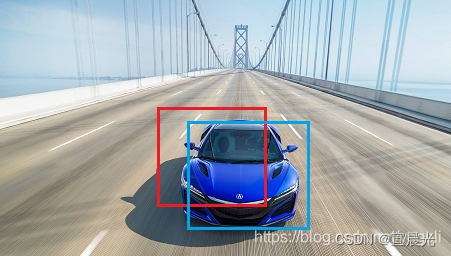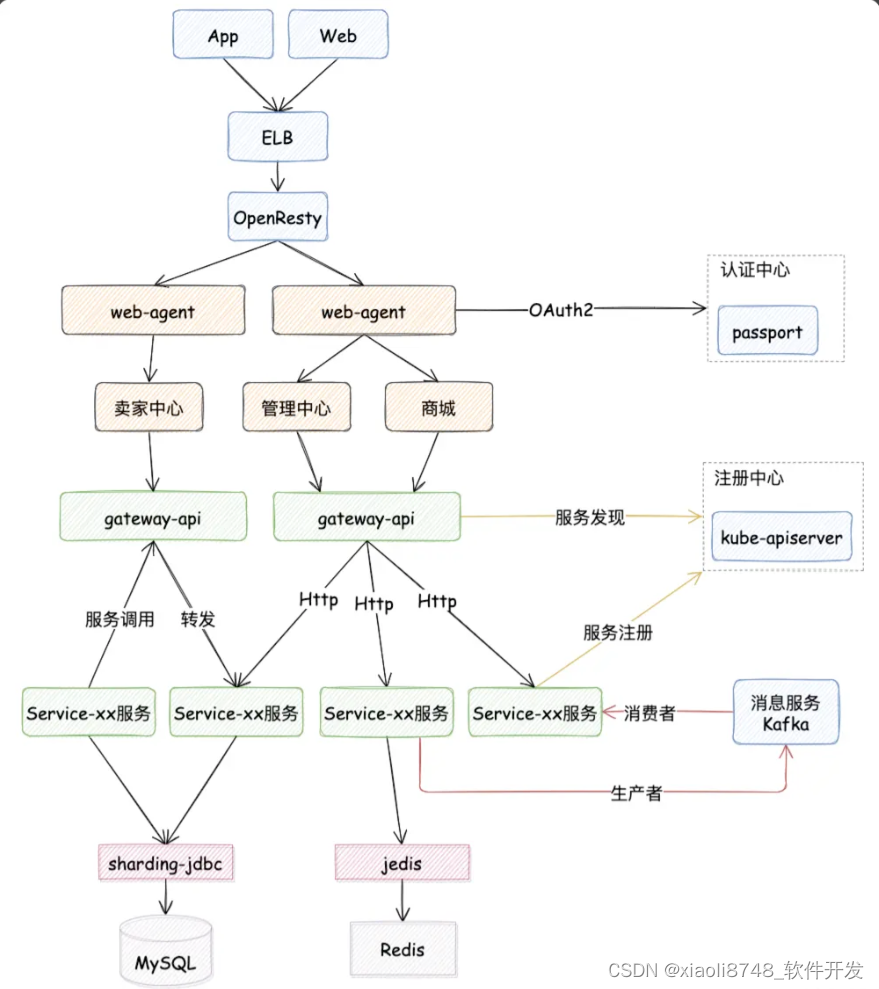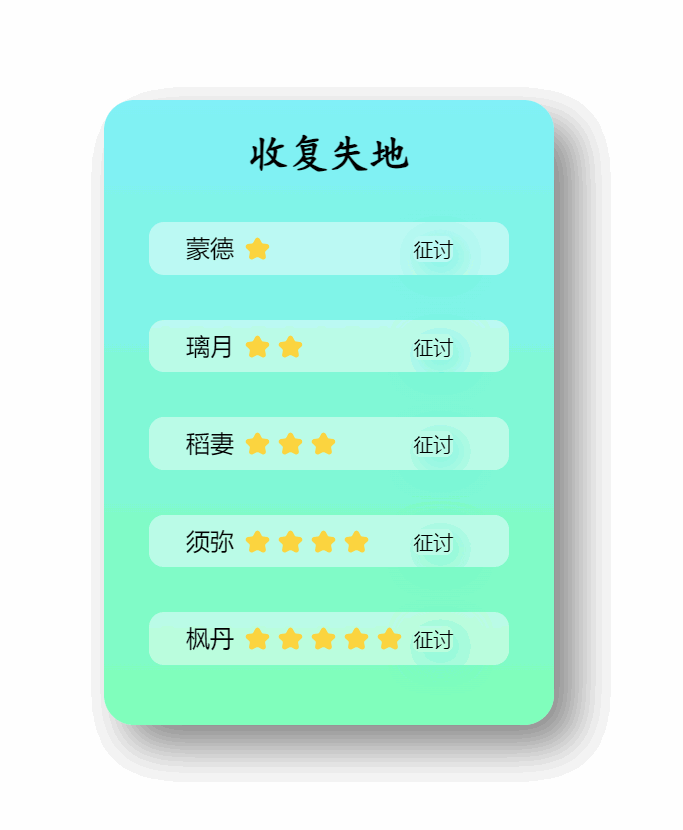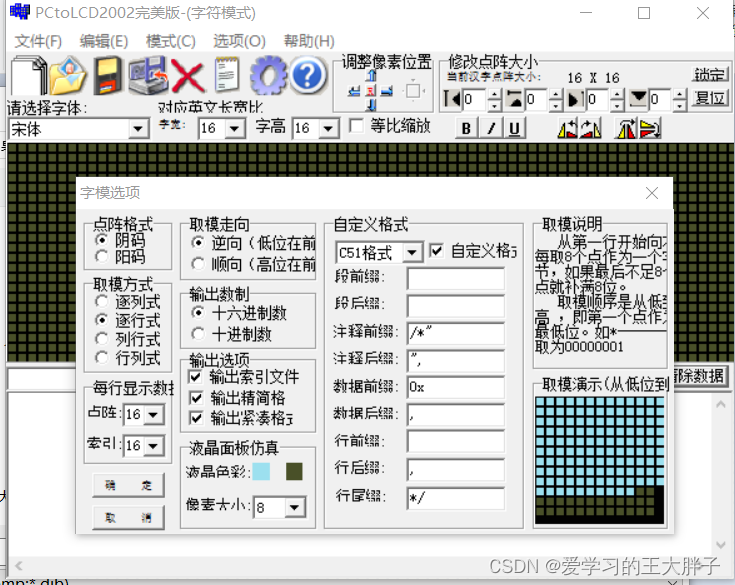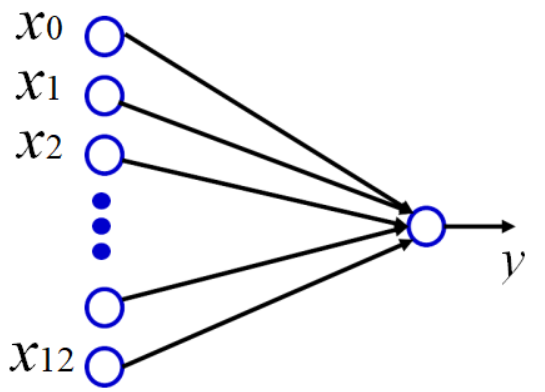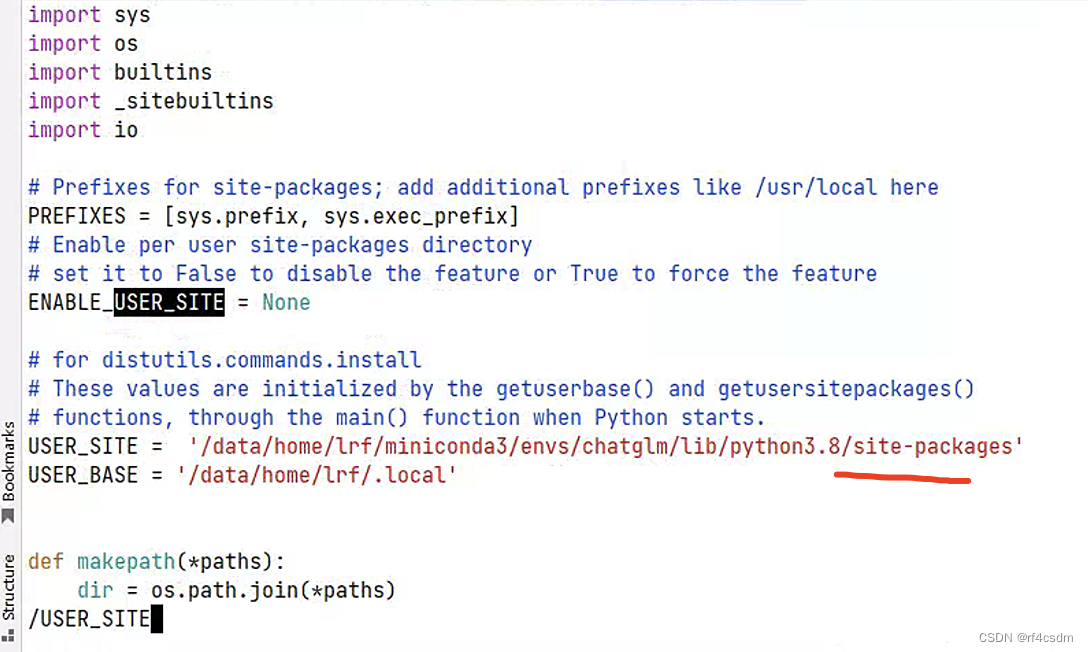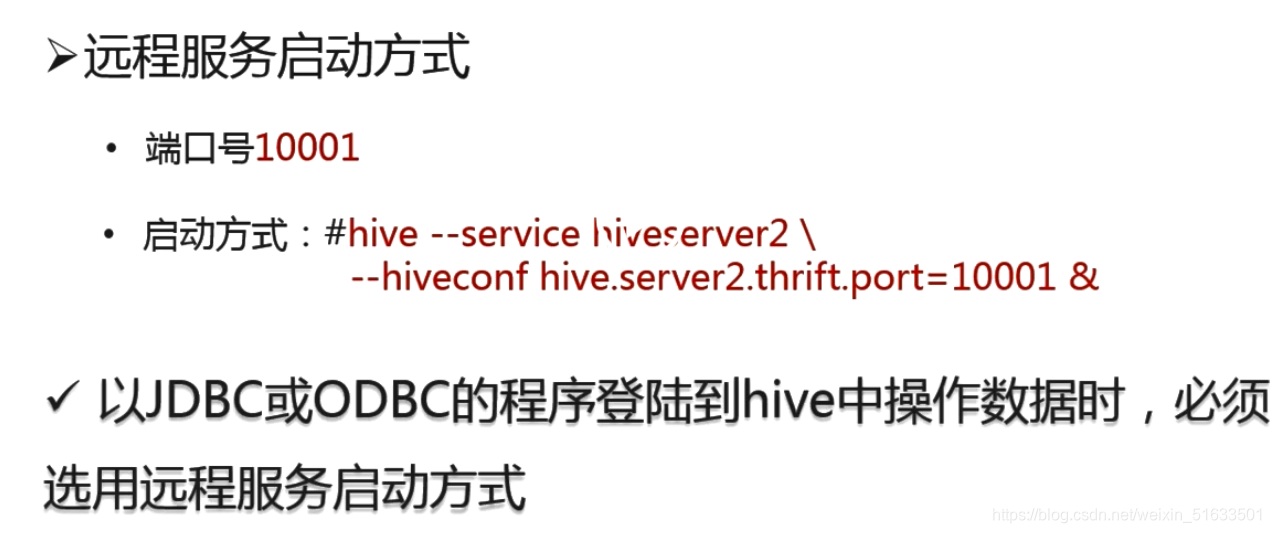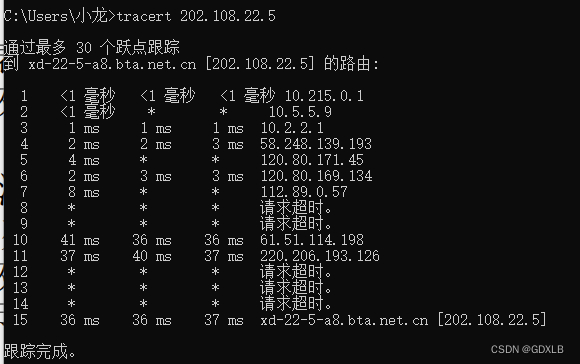前言
1、列表推导
列表的元素可以在一行中进行方便的循环。
numbers = [1, 2, 3, 4, 5, 6, 7, 8]
even_numbers = [number for number in numbers if number % 2 == 0]
print(even_numbers)输出:
在这里插入代码片[1,3,5,7]
同时,也可以用在字典上。
dictionary = {'first_num': 1, 'second_num': 2,'third_num': 3, 'fourth_num': 4}
oddvalues = {key: value for (key, value) in dictionary.items() if value % 2 != 0}
print(oddvalues)Output: {'first_num': 1, 'third_num': 3}2、枚举函数
枚举是一个有用的函数,用于迭代对象,如列表、字典或文件。该函数生成一个元组,其中包括通过对象迭代获得的值以及循环计数器(从0的起始位置)。当您希望根据索引编写代码时,循环计数器很方便。
sentence = 'Just do It'
length = len(sentence)
for index, element in enumerate(sentence):print('{}: {}'.format(index, element))if index == 0:print('The first element!')elif index == length - 1:print('The last element!')3、通过函数返回多个值
在设计函数时,我们经常希望返回多个值。这里我们将介绍两种典型的方法:
方法一
最简单的方式就是返回一个tuple。
get_student 函数,它根据员工的ID号以元组形式返回员工的名字和姓氏。
# returning a tuple.
def get_student(id_num):if id_num == 0:return 'Taha', 'Nate'elif id_num == 1:return 'Jakub', 'Abdal'else:raise Exception('No Student with this id: {}'.format(id_num))Student = get_student(0)
print('first_name: {}, last_name: {}'.format(Student[0], Student[1]))方法二、
返回一个字典类型。因为字典是键、值对,我们可以命名返回的值,这比元组更直观。
# returning a dictionary
def get_data(id_num):if id_num == 0:return {'first_name': 'Muhammad', 'last_name': 'Taha', 'title': 'Data Scientist', 'department': 'A', 'date_joined': '20200807'}elif id_num == 1:return {'first_name': 'Ryan', 'last_name': 'Gosling', 'title': 'Data Engineer', 'department': 'B', 'date_joined': '20200809'}else:raise Exception('No employee with this id: {}'.format(id_num))employee = get_data(0)
print('first_name: {},nlast_name: {},ntitle: {},ndepartment: {},ndate_joined: {}'.format(employee['first_name'], employee['last_name'], employee['title'], employee['department'], employee['date_joined']))4、像数学一样比较多个数字
如果你有一个值,并希望将其与其他两个值进行比较,则可以使用以下基本数学表达式:1<x<30。
你也许经常使用的是这种
1<x and x<30在python中,你可以这么使用
x = 5
print(1<x<30)5、将字符串转换为字符串列表:
当你输入 “[[1, 2, 3],[4, 5, 6]]” 时,你想转换为列表,你可以这么做。
import ast
def string_to_list(string):return ast.literal_eval(string)
string = "[[1, 2, 3],[4, 5, 6]]"
my_list = string_to_list(string)
print(my_list)6、对于Else方法
Python 中 esle 特殊的用法。
number_List = [1, 3, 8, 9,1]for number in number_List:if number % 2 == 0:print(number)breakelse:print("No even numbers!!")7、在列表中查找n个最大或n个最小的元素
使用 heapq 模块在列表中查找n个最大或n个最小的元素。
import heapq
numbers = [80, 25, 68, 77, 95, 88, 30, 55, 40, 50]
print(heapq.nlargest(5, numbers))
print(heapq.nsmallest(5, numbers))8、在不循环的情况下重复整个字符串
value = "Taha"
print(value * 5)
print("-" * 21)9、从列表中查找元素的索引
cities= ['Vienna', 'Amsterdam', 'Paris', 'Berlin']
print(cities.index('Berlin'))10、在同一行中打印多个元素?
print("Analytics", end="")
print("Vidhya")
print("Analytics", end=" ")
print("Vidhya")
print('Data', 'science', 'blogathon', '12', sep=', ')输出
AnalyticsVidhya
Analytics Vidhya
Data, science, blogathon, 1211、把大数字分开以便于阅读
有时,当你试图打印一个大数字时,传递整数真的很混乱,而且很难阅读。然后可以使用下划线,使其易于阅读。
print(5_000_000_000_000)print(7_543_291_635)输出:
5000000000000
754329163512、反转列表的切片
切片列表时,需要传递最小、最大和步长。要以相反的顺序进行切片,只需传递负步长。让我们来看一个例子:
sentence = "Data science blogathon"
print(sentence[21:0:-1])输出
nohtagolb ecneics ata13、 “is” 和 “==” 的区别。
如果要检查两个变量是否指向同一个对象,则需要使用“is”
但是,如果要检查两个变量是否相同,则需要使用“==”。
list1 = [7, 9, 4]
list2 = [7, 9, 4]
print(list1 == list2)
print(list1 is list2)
list3 = list1
print(list3 is list1)输出
True
False
True14、在一行代码中合并两个词典。
first_dct = {"London": 1, "Paris": 2}
second_dct = {"Tokyo": 3, "Seol": 4}
merged = {**first_dct, **second_dct}
print(merged)输出
{‘London’: 1, ‘Paris’: 2, ‘Tokyo’: 3, ‘Seol’: 4}15、识别字符串是否以特定字母开头
sentence = "Analytics Vidhya"
print(sentence.startswith("b"))
print(sentence.startswith("A"))16、获得字符的Unicode
print(ord("T"))
print(ord("A"))
print(ord("h"))
print(ord("a"))17、获取字典的键值对
cities = {'London': 1, 'Paris': 2, 'Tokyo': 3, 'Seol': 4}
for key, value in cities.items():print(f"Key: {key} and Value: {value}")18、在列表的特定位置添加值
cities = ["London", "Vienna", "Rome"]
cities.append("Seoul")
print("After append:", cities)
cities.insert(0, "Berlin")
print("After insert:", cities)输出:
[‘London’, ‘Vienna’, ‘Rome’, ‘Seoul’] After insert: [‘Berlin’, ‘London’, ‘Vienna’, ‘Rome’, ‘Seoul’]19、Filter() 函数
它通过在其中传递的特定函数过滤特定迭代器,并且返回一个迭代器。
mixed_number = [8, 15, 25, 30,34,67,90,5,12]
filtered_value = filter(lambda x: x > 20, mixed_number)
print(f"Before filter: {mixed_number}")
print(f"After filter: {list(filtered_value)}")输出:
Before filter: [8, 15, 25, 30, 34, 67, 90, 5, 12]
After filter: [25, 30, 34, 67, 90]20、创建一个没有参数个数限制的函数
def multiplication(*arguments):mul = 1for i in arguments:mul = mul * ireturn mul
print(multiplication(3, 4, 5))
print(multiplication(5, 8, 10, 3))
print(multiplication(8, 6, 15, 20, 5))输出:
60
1200
7200021、一次迭代两个或多个列表
capital = ['Vienna', 'Paris', 'Seoul',"Rome"]
countries = ['Austria', 'France', 'South Korea',"Italy"]
for cap, country in zip(capital, countries):print(f"{cap} is the capital of {country}")22、检查对象使用的内存大小
import sys
mul = 5*6
print(sys.getsizeof(mul))23、 Map() 函数
map() 函数用于将特定函数应用于给定迭代器。
values_list = [8, 10, 6, 50]
quotient = map(lambda x: x/2, values_list)
print(f"Before division: {values_list}")
print(f"After division: {list(quotient)}")24、计算 item 在列表中出现的次数
可以在 list 上调用 count 函数。
cities= ["Amsterdam", "Berlin", "New York", "Seoul", "Tokyo", "Paris", "Paris","Vienna","Paris"]
print("Paris appears", cities.count("Paris"), "times in the list")25、在元组或列表中查找元素的索引
cities_tuple = ("Berlin", "Paris", 5, "Vienna", 10)
print(cities_tuple.index("Paris"))
cities_list = ['Vienna', 'Paris', 'Seoul',"Amsterdam"]
print(cities_list.index("Amsterdam"))26、2个 set 进行 join 操作
set1 = {'Vienna', 'Paris', 'Seoul'}
set2 = {"Tokyo", "Rome",'Amsterdam'}
print(set1.union(set2))27、根据频率对列表的值进行排序
from collections import Counter
count = Counter([7, 6, 5, 6, 8, 6, 6, 6])
print(count)
print("Sort values according their frequency:", count.most_common())输出:
Counter({6: 5, 7: 1, 5: 1, 8: 1})
Sort values according their frequency: [(6, 5), (7, 1), (5, 1), (8, 1)]28、从列表中删除重复值
cities_list = ['Vienna', 'Paris', 'Seoul',"Amsterdam","Paris","Amsterdam","Paris"]
cities_list = set(cities_list)
print("After removing the duplicate values from the list:",list(cities_list))29、找出两个列表之间的差异
cities_list1 = ['Vienna', 'Paris', 'Seoul',"Amsterdam", "Berlin", "London"]
cities_list2 = ['Vienna', 'Paris', 'Seoul',"Amsterdam"]
cities_set1 = set(cities_list1)
cities_set2 = set(cities_list2)
difference = list(cities_set1.symmetric_difference(cities_set2))
print(difference)30、将两个不同的列表转换为一个字典
number = [1, 2, 3]
cities = ['Vienna', 'Paris', 'Seoul']
result = dict(zip(number, cities))
print(result)读者福利:如果你喜欢编程,那这套python学习资料一定对你有用,
对于0基础小白入门:
如果你是零基础小白,想快速入门Python是可以考虑的。
一方面是学习时间相对较短,学习内容更全面更集中。
二方面是可以找到适合自己的学习方案
包括:Python安装包+激活码、Python web开发,Python爬虫,Python数据分析,人工智能、机器学习等教程。带你从零基础系统性的学好Python!
零基础Python学习资源介绍
👉Python学习路线汇总👈
Python所有方向的技术点做的整理,形成各个领域的知识点汇总,它的用处就在于,你可以按照上面的知识点去找对应的学习资源,保证自己学得较为全面。(学习教程文末领取哈)

👉Python必备开发工具👈

温馨提示:篇幅有限,已打包文件夹,获取方式在:文末
👉Python学习视频600合集👈
观看零基础学习视频,看视频学习是最快捷也是最有效果的方式,跟着视频中老师的思路,从基础到深入,还是很容易入门的。
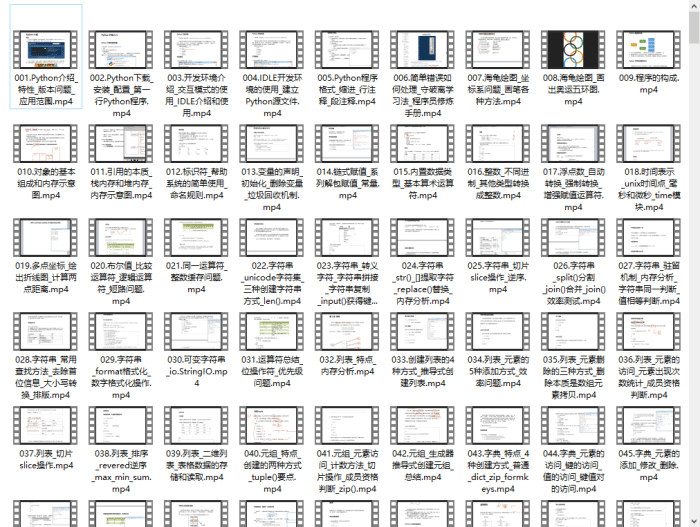
👉实战案例👈
当我学到一定基础,有自己的理解能力的时候,会去阅读一些前辈整理的书籍或者手写的笔记资料,这些笔记详细记载了他们对一些技术点的理解,这些理解是比较独到,可以学到不一样的思路。
光学理论是没用的,要学会跟着一起敲,要动手实操,才能将自己的所学运用到实际当中去,这时候可以搞点实战案例来学习。

👉100道Python练习题👈
检查学习结果。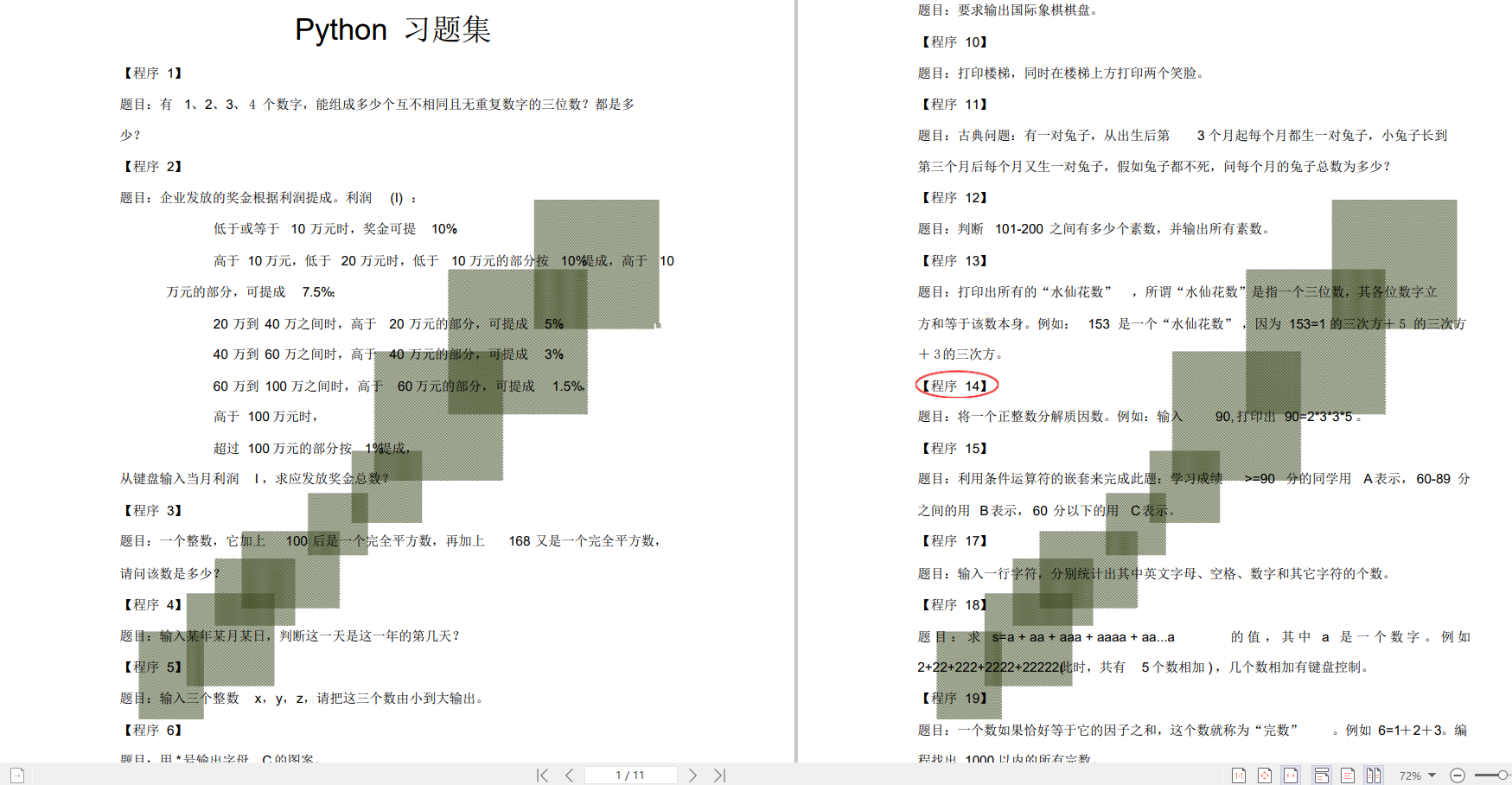
👉面试刷题👈

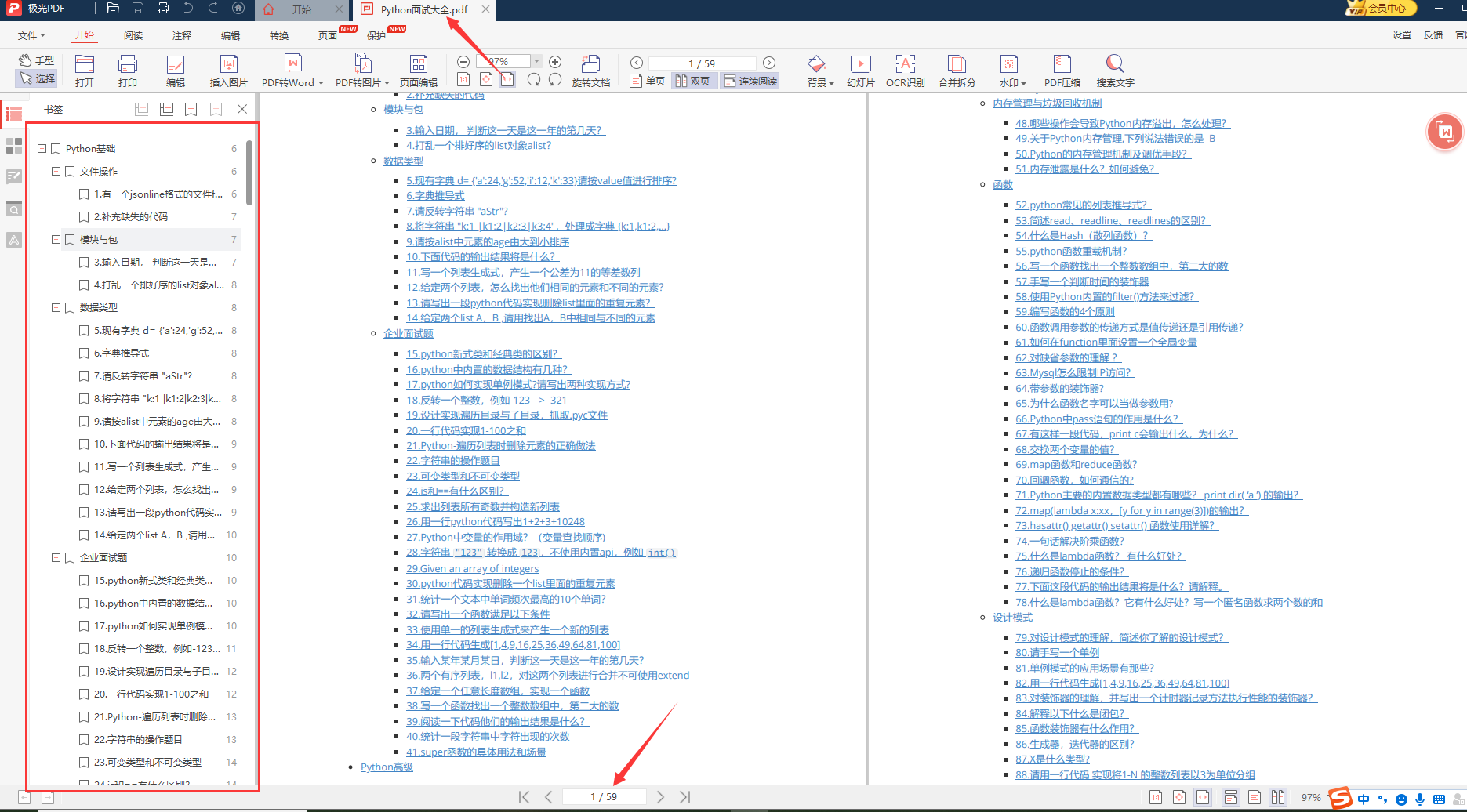

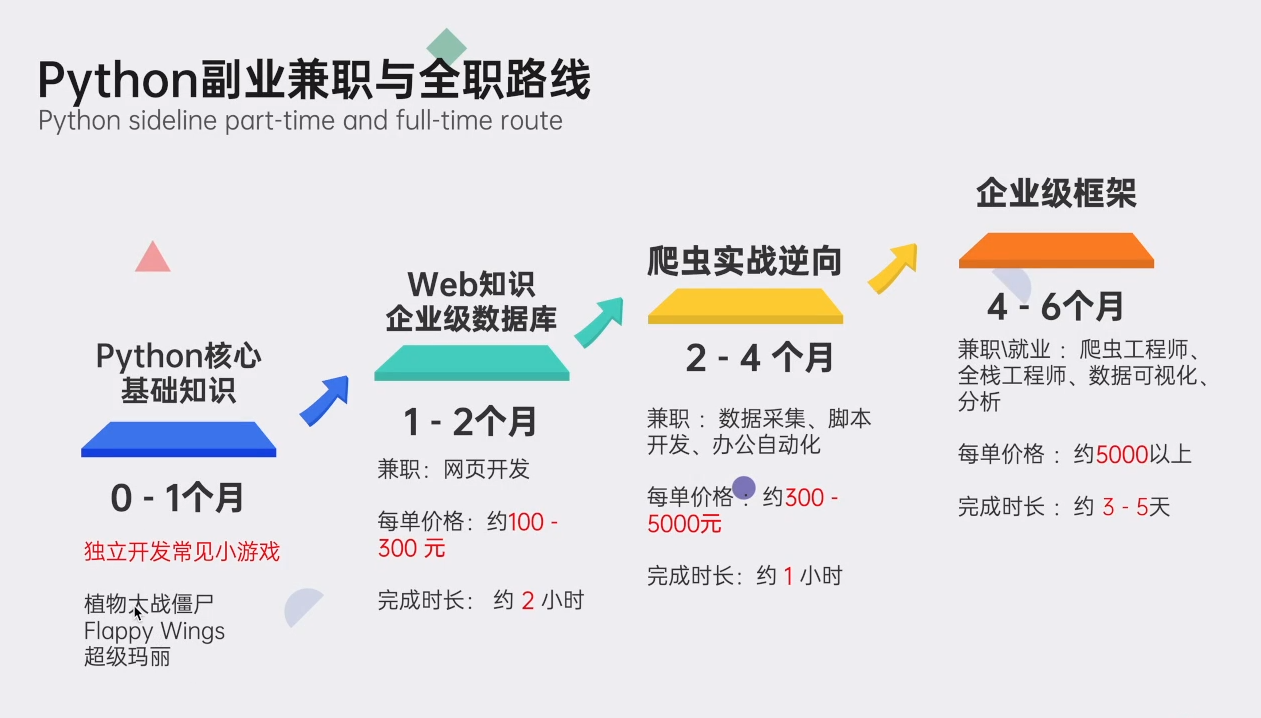
资料领取
这份完整版的Python全套学习资料已为大家备好,朋友们如果需要可以微信扫描下方二维码添加,输入"领取资料" 可免费领取全套资料【有什么需要协作的还可以随时联系我】朋友圈也会不定时的更新最前言python知识。↓↓↓
